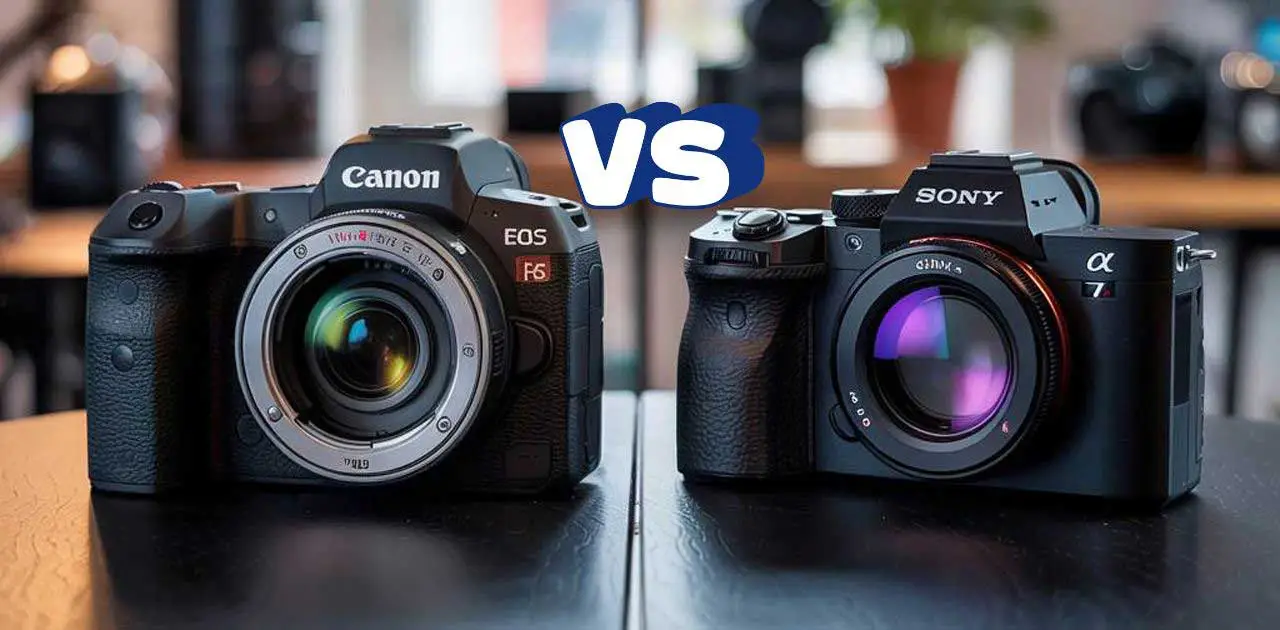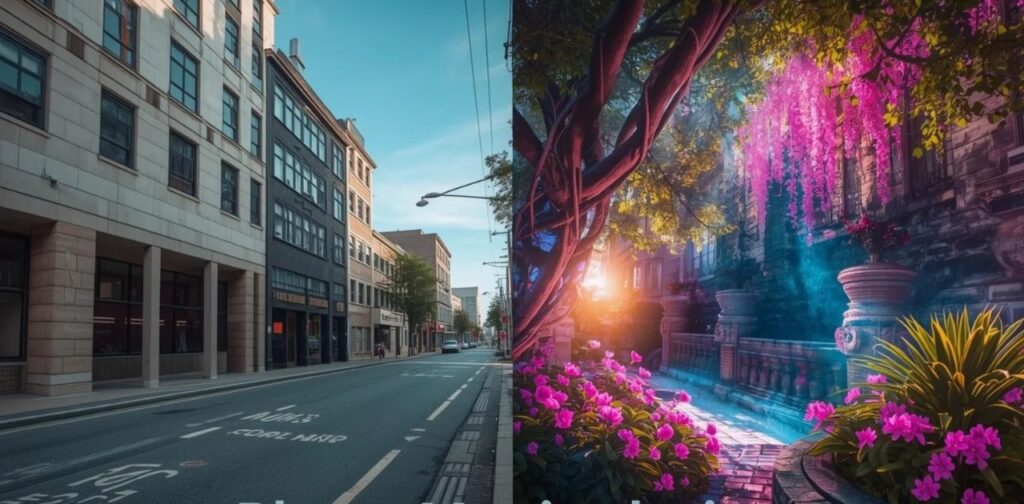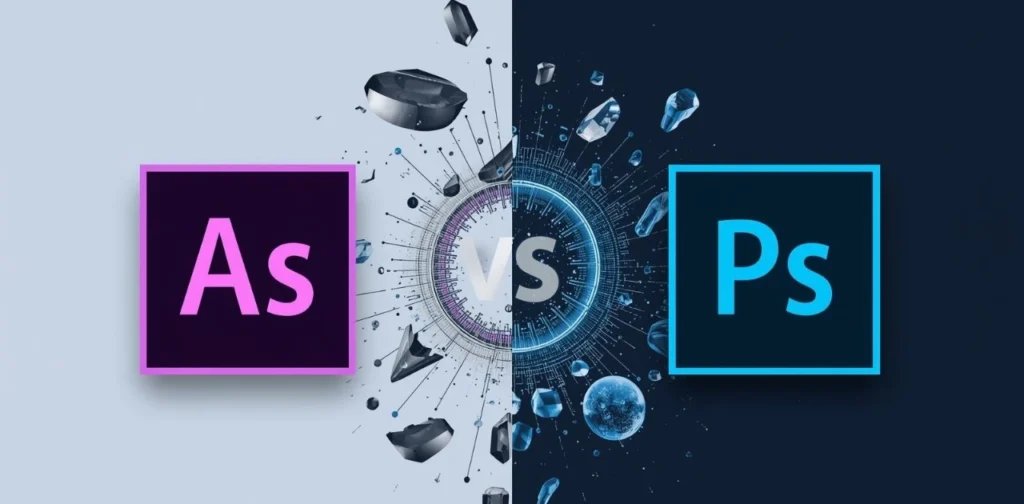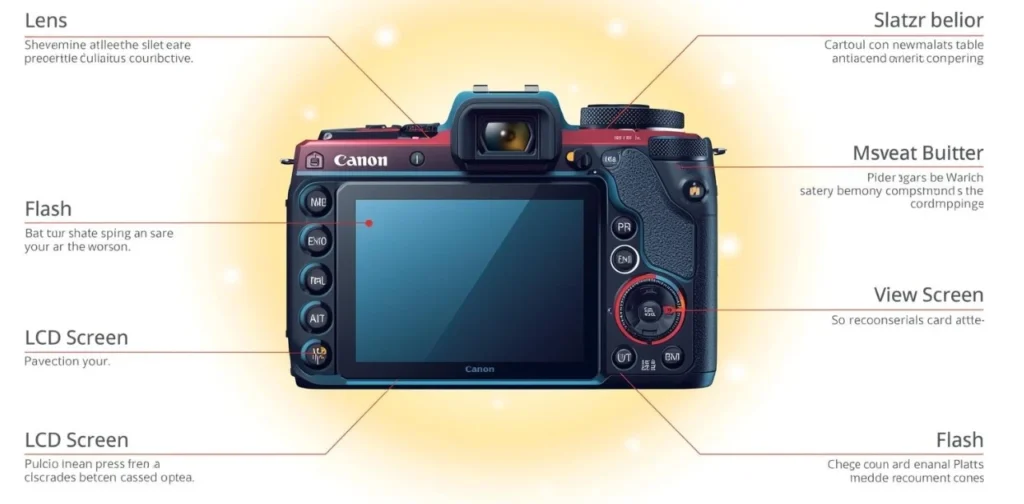The Canon vs Sony debate has been heating up among photographers and photography studios, especially across the USA and Europe. Whether you snap weddings in Italy or shoot products in New York, picking between Canon and Sony can feel tricky. Both brands offer strong cameras, but finding the one that matches your style can make a big difference. Your camera is more than a tool, it’s a part of your creative work. That’s why it’s smart to think carefully before making a choice.
Every photographer and studio wants clear, colorful, and powerful images. Choosing the right camera helps you get there faster. In this blog, we will dig into the Canon vs Sony discussion and share real-life advice. You’ll get simple tips to help you decide what fits your work best. Ready to find out which brand could lift your studio’s photos to the next level? Let’s go right in!
The Legacy of Canon and Sony in the Photography World
Canon
Canon has earned trust from photographers and photography studios across the USA and Europe for a long time. Its journey started way back in 1937. Since then, Canon has stayed strong by making cameras that are easy to use and give amazing results. Many photographers share stories about their first real camera being a Canon. Whether snapping weddings in Paris or shooting city life in New York, Canon cameras have been a loyal partner.
Innovation has always been a big part of Canon’s story. It gave the world the first autofocus SLR camera. Later, Canon made CMOS sensors that changed how clear and colorful photos could be. The EOS series, born in 1987, became a favorite in both Europe and America. Cameras like the Canon EOS 5D Mark IV and the Canon R5 are still loved today. Studios often stay loyal to Canon because the colors are warm, skin tones look real, and every shot feels alive.
Sony
Sony joined the camera race with fresh energy. It started slowly but soon became a serious player. Its first digital camera came out in 1988. Over time, Sony cameras wowed everyone with new ideas. Friends who shoot weddings abroad tell me that moving to Sony felt like putting on a new pair of glasses. Every little detail stood out sharper and brighter.
Sony brought real magic with features like Real-Time Eye Autofocus and super strong image stabilization. Models like the Sony A7 III and the A7R IV became favorites fast. In the USA and Europe, many photographers love Sony’s small, light designs that still pack huge power. They are great for artists who move fast and need cameras that keep up.
Key Features to Compare: Canon vs Sony
Choosing between Canon and Sony feels a bit like picking between coffee and tea. Both taste great but bring a different kind of energy. Let’s take a closer look at what really separates these two camera giants.
Sensor Technology: Canon’s CMOS vs Sony’s Exmor
Canon’s CMOS sensors have been around for decades. They offer strong colors and rich details. Many wedding photographers in Europe say Canon’s skin tones look more natural, almost like painting with soft pastels.
Sony’s Exmor sensors are a newer creation. They shine in bright and dark places. Friends who shoot sports events often tell me that Sony’s sensors catch every tiny move, even in crazy lighting.
If you love deep colors and smooth textures, Canon feels like an old friend. If you need crisp details and crazy-low noise, even at ISO 6400, Sony brings the magic.
Image Quality, Low-Light Performance, and Sharpness
Canon’s images have that famous warm glow. They still look great even if you print them large. In low light, models like the Canon R6 shine without adding too much grain.
Sony cameras take sharpness to another level. They keep every hair strand and raindrop in focus. In dark spaces, Sony’s A7S III can almost see like a cat at night.
Autofocus Systems: Canon Dual Pixel AF vs Sony Real-Time Eye AF
Canon’s Dual Pixel autofocus feels smooth and sticky. It locks onto faces fast and follows them even if they move around. Shooting a busy wedding dance floor? Canon keeps up like a champ.
Sony’s Real-Time Eye Autofocus is pure wizardry. It sticks to the subject’s eye like glue, even if they jump, run, or turn away. One time, I saw a photographer at a concert who didn’t miss a single
singer’s glance using a Sony A7 IV. It felt like watching magic.
Both brands offer crazy speed and tracking, but Sony edges ahead slightly for fast-action moments.
Speed, Accuracy, and Tracking Capabilities
Canon cameras bring a natural, flowing focus speed. They feel less digital and more like working with a loyal assistant who just knows what you want.
Sony cameras, on the other hand, feel lightning-fast. Every click feels like you are racing on a track. They are sharp, accurate, and rarely miss, even with tricky, moving subjects.
Video Capabilities: 4K and Beyond for Both Brands
Canon cameras record stunning 4K video. Colors stay true and natural. Shooters often say Canon video looks “cinematic” right out of the camera. Models like the EOS R5 even offer 8K recording for those who want insane detail.
Sony pushes harder into video power. Cameras like the A7S III offer beautiful 4K at 120 frames per second. You also get S-log for more color grading freedom. A friend filming short films in London swears by Sony’s video options because they feel like working with Hollywood gear without the crazy price. If you need easier, ready-to-share video, Canon feels more plug-and-play. If you want to dive deep into editing, Sony opens a wider playground.
Canon’s Video Quality vs Sony’s Video Features
Canon offers gorgeous color science right away. Little editing needed. Videos feel warm, real, and lively.
Sony gives more control but needs more editing work. You get flat-looking footage at first, but once you color-grade it, it can look breathtaking.
Battery Life: Which Brand Lasts Longer in Field Shoots?
Canon cameras often last longer in real-world shooting. During long weddings or outdoor shoots, many Canon users report going all day on one or two batteries.
Sony cameras have improved a lot in battery life. Still, some models might need an extra battery if you shoot nonstop for hours. My buddy who covers outdoor sports always carries three batteries for his Sony A7 IV, just to stay safe.
Real-World Test:
Canon EOS R6: Around 510 shots per charge
Sony A7 IV: Around 580 shots per charge (but more power-hungry in video)
Both brands give strong battery life now, but heavy video users might notice Sony runs down faster, especially with high frame rates.
Performance in Real-World Photography
Cameras might sound amazing in reviews, but the real magic happens when you use them. You feel the difference once you click the shutter. You need a camera that responds, understands, and fits you like a glove.
Canon for Studio Photography
Canon is a favorite inside the studio. Many photographers love how Canon cameras deliver beautiful colors. I remember using a Canon 5D Mark IV for a fashion shoot. The skin tones were soft, smooth, and so natural that editing felt almost too easy.
Canon cameras capture fine details without losing the warmth that makes people look alive. Studio photographers trust Canon because the results are predictable and rich.
Popular Canon Lenses and Lighting Setups
- Canon EF 85mm f/1.2L II USM: Perfect for dreamy portraits.
- Canon RF 50mm f/1.2L USM: Super sharp with creamy backgrounds.
- Lighting Tip: Pair Canon with Godox AD600Pro strobes for clean, bright shots without heavy editing.
Best Canon Cameras for Studio Use
- Canon EOS R5: 45MP of pure detail and fast shooting.
- Canon 5D Mark IV: Trusty, tough, and always ready.
- Canon EOS R6: Great for fast sessions with lots of movement.
Studio work often needs color accuracy and skin tones that feel real. Canon makes it easier to deliver that magic without extra work.
Sony for Outdoor & Event Photography
Sony wins big when life gets fast and wild. Outdoor weddings, concerts, sports events, Sony feels like it was made for those moments. The autofocus is so quick it almost feels alive.
A good friend of mine, a wedding photographer, switched to Sony before a wedding season. She said the Sony A7 IV let her shoot a full 12-hour day without missing a beat. Her pictures looked fresh, alive, and full of soul.
Autofocus and Portability for Outdoor Shoots
- Eye Autofocus locks onto faces like a magnet.
- Lightweight Bodies: Your back and shoulders will thank you after long shoots.
- Weather Resistance: Built tough for unexpected rain or dusty winds.
Best Sony Cameras for Event and Portrait Photography
- Sony A7 IV: The reliable all-rounder.
- Sony A7R V: Sharp enough to see every eyelash.
- Sony A9 II: Speed demon for high-action days.
Sony cameras feel like a smart sidekick who is always ready, always alert, and always one step ahead.
Lens and Accessory Compatibility: Canon Vs Sony
Canon’s Lens Ecosystem
Canon has built one of the biggest lens collections in the photography world. If you enjoy portraits, landscapes, sports, or weddings, there’s a Canon lens made just for you. Canon’s EF series is perfect for DSLRs and offers strong, fast lenses that deliver beautiful results. Their RF series, designed for mirrorless cameras, brings sharpness and clarity that feels almost magical. If you hear someone mention Canon’s L series, they’re talking about premium lenses trusted by professionals worldwide.
I remember using a Canon EF 50mm f/1.8 lens at my cousin’s wedding. The way it blurred the background made every picture look like a painting. Even my uncle thought I had edited them with fancy software. Moments like that show how much a great lens matters.
Canon also shines when it comes to accessories. Whether you need flashes, battery grips, or lens adapters, Canon’s range works smoothly and fits without a problem. Everything feels solid and easy to use, which is a huge plus when you are working on a tight schedule.
Sony’s E-mount System
Sony might have entered the camera world later, but they caught up fast with their E-mount system. Sony lenses are known for being light, sharp, and modern. They make it simple for photographers to carry less weight without losing image quality.
You also get a lot of flexibility with Sony. Brands like Sigma, Tamron, and Zeiss create fantastic lenses that fit Sony cameras perfectly. Even if you have older lenses lying around, adapters make it easy to bring them back to life on a Sony body.
One of my friends who shoots weddings swears by her Tamron 28-75mm f/2.8 on a Sony A7 III. She says it’s the perfect mix of sharpness and portability. It makes her job easier when moving between indoor ceremonies and outdoor portraits.
Pricing and Value for Money
When it comes to investing in cameras, price is always an important factor. Both Canon and Sony offer models across various price ranges, but the real question is: Which one gives you the best value for your money?
Canon vs Sony Price Points
Canon and Sony have options for every level of photographer. Canon’s entry-level models, like the Rebel series, are great for beginners, offering solid image quality at affordable prices. For mid-range options, the Canon EOS 90D offers impressive specs for those who want a step up without breaking the bank. For professional-grade models, the Canon EOS R5 and EOS-1D X Mark III are industry leaders with a price to match their performance.
Sony is a strong contender in every price category as well. The Alpha a6000 series offers fantastic value for entry-level shooters, while the a7 and a9 series cater to pros with their high-quality image sensors and fast autofocus. Like Canon, Sony also has its flagship models, such as the a7R IV and the a9 II, that are built for top-tier performance in demanding environments.
Price Comparison for Similar Specs and Features
Let’s compare the pricing of similar cameras to get a better sense of value. The Canon EOS R5, priced around $3,900, offers 45MP, 8K video, and top-notch autofocus. On the other hand, the Sony a7R IV, priced similarly at around $3,500, offers a 61MP sensor and excellent video capabilities.
For those in the mid-range, the Canon EOS 90D at $1,200 offers great performance, including 4K video, while the Sony a6400, priced at about $900, gives you a compact mirrorless option with excellent autofocus and video quality. Both cameras are excellent for photographers looking to upgrade from entry-level models without reaching into the higher-end price brackets.
User Experience: Canon vs Sony
Canon’s Easy Interface and Controls: Great for Beginners and Pros
Canon cameras are loved for their simple design. Beginners in photography enjoy how easy it is to find settings and move through menus. The buttons are placed well, so you can make quick changes without missing a moment. For pros, the familiar layout makes it fast to switch settings and modes. Whether you’re taking portraits in a studio or snapping fast shots at a wedding, Canon feels easy and natural to use.
Sony’s Menu and Custom Settings: Perfect for Full Control
Sony gives you lots of ways to set up your camera just the way you like. At first, the menus might seem a little confusing. But many experienced photographers enjoy how much they can adjust. You can change focus settings, color styles, and so much more. Sony is great if you want to fine-tune every little thing. No matter if you’re at a busy event or a quiet landscape shoot, Sony’s features let you work your way.
What Photographers Say: Real Reviews from USA and Europe
Photographers from the USA and Europe have strong views about Canon and Sony. Canon fans love the simple controls and solid autofocus, especially for portraits and studio work. They say it makes their jobs easier and more fun.
Sony fans, though, often talk about the brand’s smart features and fast focus. They say Sony is a top pick for shooting action, wildlife, and busy events. Many also like how small and light Sony cameras are. They feel free to get creative and try new things with Sony’s flexible system.
Canon vs Sony: Which is Right for Your Photography Studio?
For Portrait and Event Photographers: Which Works Better?
Canon is loved by portrait and event shooters.
Here’s why:
- Soft, warm skin tones
- Easy-to-use menus
- Quick autofocus in low light
My Switzerland friend Sarah switched to Canon for weddings. She told me, “It just feels natural. I can focus on the couple, not the camera.”
Sony is like having a smart helper.
It brings:
- Super fast Eye AF
- Sharp, clear photos
- Lighter cameras that are easy to carry all day
At a birthday party, my cousin caught a flying balloon with his Sony A7 IV. No blur, just a sharp shot!
Ask yourself:
➡️ Do you want soft, true colors (Canon)?
➡️ Or sharp, quick shots (Sony)?
For Commercial and Product Photographers: Color or Detail?
Canon’s color science is famous.
Here’s why studios love it:
- Products look real without heavy edits
- Colors pop right out of the camera
- Saves editing time
A friend who shoots clothes said, “Canon cuts my ecommerce photo editing in half. The colors are just perfect.”
Sony’s sharpness is a strong point too:
- Every tiny detail stands out
- Great for tech and jewelry shots
- Helps photos look clean and bright
If you shoot shiny things like watches or rings, Sony’s sharpness might wow your clients.
For Studios with Teams: Which Is Easier for Everyone?
If you run a busy studio, you want gear that’s easy for everyone.
Canon is team-friendly because:
- Menus are simple to learn
- Most Canon cameras feel alike
- Less training time needed
Sony gives you options:
- Advanced users can tweak settings
- Frequent updates add cool features
- Light cameras mean happy wrists
One studio I know uses Canon for portraits and Sony for video. It works because both teams get what they need.
Think about your team:
➡️ Do they need simple, same-feel gear (Canon)?
➡️ Or do they want full control and tech (Sony)?
Conclusion:
Both Canon and Sony offer amazing cameras for different styles and needs. Canon wins hearts with beautiful color and easy handling, while Sony shines with speed and sharpness. Before picking your gear, think about your studio’s style, your team’s experience, and your daily workflow. What feels right in your hands will often be your best choice!




